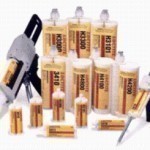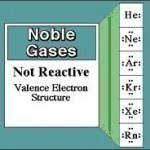Potassium chlorate is a chemical compound that contains chlorine, oxygen, and potassium. In its pure form, it is white and crystalline in appearance. It is the most common chlorate used in industry, school, research, and commercial labs. Potassium chlorate is commonly used: to prepare oxygen, in safety matches, as an oxidizing agent, in fireworks and explosives, and in fruit cultivation. Potassium Chlorate Uses Potassium chlorate was originally one of the key ingredients in firearm percussion caps or primers, and is still infrequently used in this way today. It is more Read More
Stretchene
Stretchene is the name of a special kind of high-performance resin that falls under the polypropylene family of materials. Although it is considered as polypropylene, stretchene has better characteristics which make it a standout among all polypropylene materials. Conventional polypropylene or PP (also polypropene) is a thermoplastic material mainly used for the packaging industry because it is resistant to many chemicals. The most common use of polypropylene is in food packaging. Stretchene, however, has more desirable properties than conventional polypropylene. Thus, it is fit for even more applications such as Read More
ESR Spectroscopy

ESR Spectroscopy (Electron Spin Resonance Spectroscopy or Electron Paramagnetic Resonance Spectroscopy) is a technique used for studying chemical species that have one or more “free radical” or unpaired electrons. Most stable molecules only have paired electrons without any free radicals, so ESR Spectroscopy is used less often than NMR (Nuclear Magnetic Resonance) Spectroscopy, the usual technique for studying chemical bonds. This also means that ESR Spectroscopy is a highly specific technique. How does ESR Spectroscopy Work? A constant photonic frequency, such as microwave radiation, is used in conjunction with an Read More
Methyl Methacrylate
Methyl methacrylate has been used in plastic and resin manufacture for a number of years. It has been found to be significantly irritating to human eyes, skin, and mucous membranes. Exposure to methyl methacrylate has both short and long term effects and includes symptoms such as coughing, wheezing, chest tightness, and some neurological symptoms. The U.S. EPA does not consider the substance to be carcinogenic to humans. What is Methyl Methacrylate Used For? Methyl Methacrylate is primarily used in the production of plastics, resins, and plexiglass. These are then used Read More
What is Magnesium Used For?
Magnesium is a chemical substance denoted by the symbol Mg. It forms part of the Group 2 of the periodic table, thus making it an alkaline earth metal. Its atomic number is 12 and it is considered to be the 8th most copious element found in the earth’s crust. In terms of the human body, it is the 11th most copious element found in it. Magnesium ions are extremely vital to all living cells, as they are instrumental in the control of biological compounds such as ATP (Adenosine Triphosphate), RNA Read More
Magnesium Anodes
Sacrificial anodes are used in cathodic protection systems in order to protect the primary metallic component(s) from corrosion. A magnesium anode is a type of metal used on boats and ships in order to protect the vessel’s other metallic parts. It first protects the area’s less active metal and acts as a corrosion barrier. How Do Magnesium Anodes Work? Magnesium anodes are more active than the base metal and therefore oxidizes easier. The anode’s electrons are stripped and conducted to the base metal that becomes the system’s cathode. This cathode Read More
Amino Acids
An amino acid is a molecule that contains three specific components. The first is an amine group which contains a nitrogen and two hydrogen. The second component is a carboxylic acid which is a weak acid which is written as COOH. Sometimes, it is written as R-COOH to document that the carbon is attached to some other side chain. The side chain, therefore, is the third component of an amino acid and the side chain differs from amino acid to amino acid. The Twenty One Amino Acids There are twenty Read More
Acrylic Adhesives

An acrylic adhesive is a resin-based adhesive that is comprised of acrylic or methylacrylic polymers. It is rather complicated to produce acrylic adhesives as they must be formed into a polymer, suspended in a catalyst, and cured. Acrylic adhesives are very strong and efficient at bonding multiple objects together. They are resistant to sunlight, not easily broken up by water/humidity, and can withstand temperature fluctuations. These features cause acrylic adhesives to be the most preferred type. Strength Factors Any acrylic adhesive’s strength depends on several highly critical factors and is Read More
What Are Noble Gases?

A noble gas is a non-reactive, monatomic gas that is located on the far right edge of the periodic table. Noble gases include argon, helium, krypton, neon, radon, xenon, and unonoctium. Helium is the most common of the noble gases and argon is the most common on Earth, making up approximately one percent of the planet’s atmosphere. Helium is found throughout the universe, including on the Earth, and is also found in large quantities in underground reserves. Noble Gas Uses Noble gases are used when an inert atmosphere is required Read More
Potassium Dichromate
Potassium dichromate (K2Cr2O7) is an inorganic chemical reagent that is normally used as an oxidizer in industrial and laboratory applications. It is used to oxidize alcohols and convert primary alcohols to aldehydes and sometimes carboxylic acids. Unlike similar processes that use permanganate, only carboxylic acids result. The secondary alcohols are converted into ketones and no further oxidation is required. Potassium dichromate does not oxidize tertiary alcohols. The chemical is potentially harmful to human health and is a crystalline ionic solid that is a bright, red-orange color. Potassium Dichromate Uses When Read More


Share on: